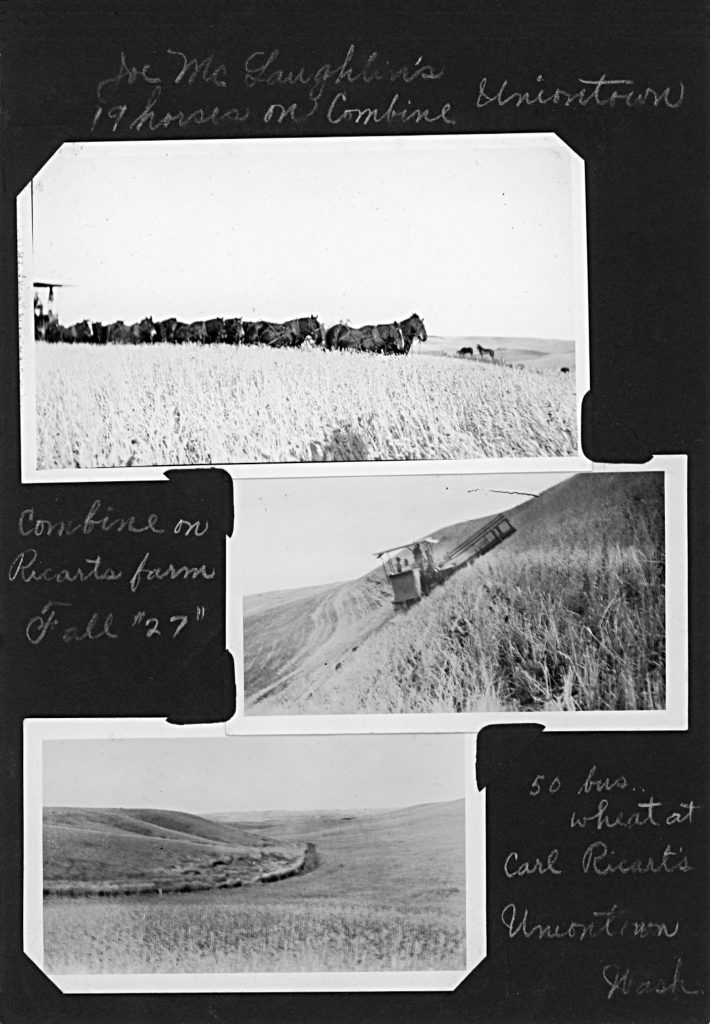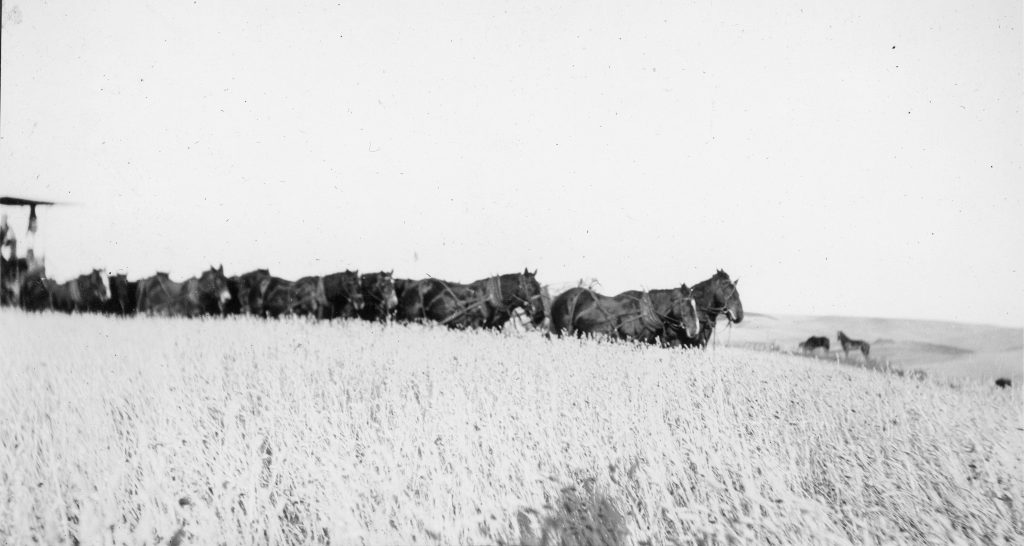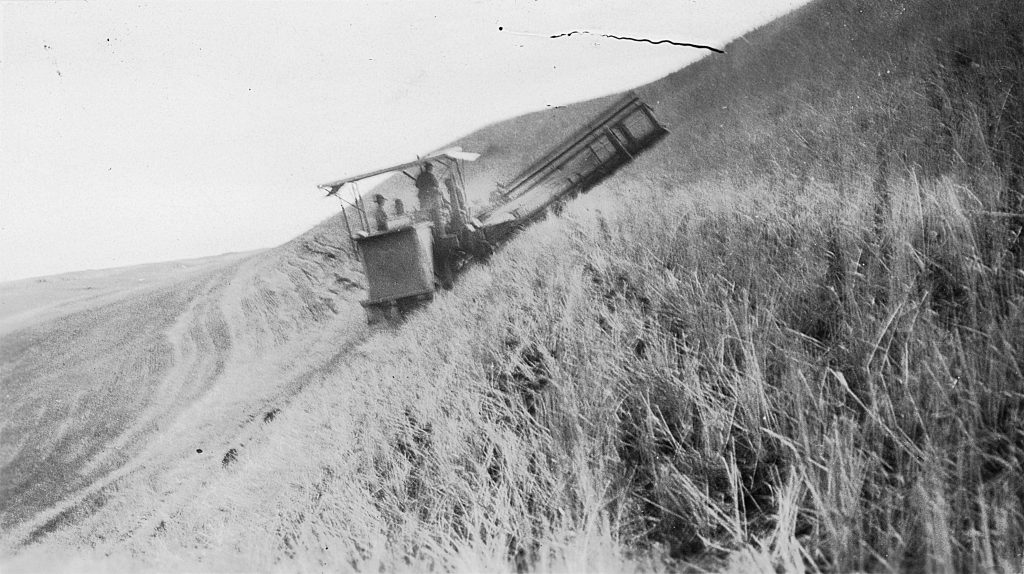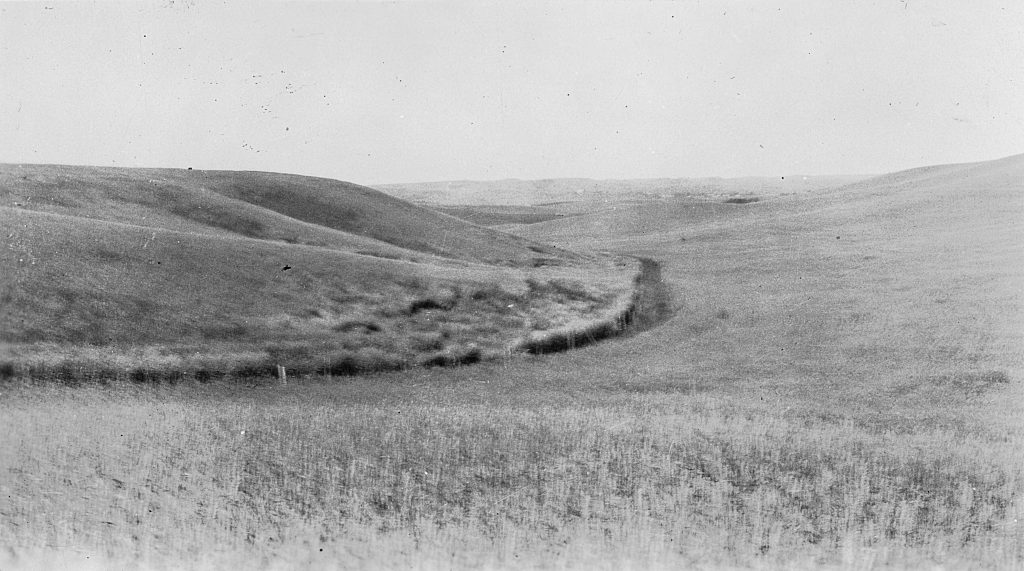This page from Dad’s photo album deals with the wheat harvest in 1927, in the Palouse (specifically, near Uniontown, Washington, not far from the Washington-Idaho border).

As has been mentioned in previous posts, Dad and Uncle Irvine worked the wheat harvest in the Palouse in fall 1927. This is how that came about, in Dad’s words:
We drove from the [Willamette] Valley to Colfax, a little over 500 miles then (I don’t know whether it is much different now [according to Google Maps it is 434 miles from Albany to Colfax now]), and the town was just full of people wanting work. As near as we could tell, the way to get a job was to apply at the employment office. We hung around a short time and the longer we stayed, the worse it looked. So we took off east about 25 or 30 miles, unrolled our bedrolls alongside the road, and went to sleep. At about five or six o’clock in the morning, we were awakened and asked if we wanted a job. We answered, “That’s what we’re here for.” “We need one man.” We looked at each other and Irvine said, “I’ve got a car—you take it.” Irvine had a job before the day was out. My job turned out to be a job for two years [working] for Joe McLaughlin: one fall for me and the next for Earl.
I’m not sure whether Joe McLaughlin was a farmer or was someone who had equipment and a crew that went farm to farm harvesting. I am inclined to think maybe he was the latter, since Dad’s caption in the photo album refers to “Joe McLaughlin’s 19 horses on combine” and mentions a different farmer’s name (Carl Ricart). Dad is clear that Joe was his employer (and Earl’s employer the next year).
Things were in transition at this time. Dad writes:
About the time we moved to Oregon [1922] there was beginning to be a trend toward combines and away from stationary threshing machines. Harvesting and threshing would be done by combining both jobs, doing them both with one machine known as the combine.
…and in that period the combine was pulled across the field by a team of horses.
The first photo on the page shows the aforementioned Joe McLaughlin’s team of nineteen horses pulling a combine through a wheat field. (It must have been pretty impressive to see such a large team of horses pulling together like that.)

The second photo shows the combine itself, from behind.

One of the challenges of farming in the Palouse is the hills that are steep enough to cause farm equipment to tip over. It appears from this photo that the combine is remaining level on the slope. And you can see that the reel and cutter bar are held at an angle, parallel to the ground, so it can reap the wheat on the slope. Self-leveling combines weren’t invented until 1941, so I assume it was some kind of manual process to keep this combine level as it went along the hillside.
The third photo shows a harvested wheat field on Carl Rickart’s farm.

Dad notes that the field produced 50 bushels of wheat per acre. The most they ever saw in a harvest in Alberta was 40 bushels per acre. The one year the harvest might have exceeded that, the crop was destroyed by hail. I think Dad noted the 50 bushels per acre figure on this photo album page because it seemed like such a bountiful harvest compared to his experience on the Canadian prairie.
Should you wish to read some of Dad’s memories of harvesting wheat on the Alberta homestead, click here.
After the harvest was over, Dad and Uncle Irvine drove across Washington to Seattle to visit Auntie Hawkins, then on to Hoquiam to visit cousin Leroy and his wife Ann. Exactly when they finally returned to the Jefferson area is not recorded. But by the following March Dad was working for Peter Zehr and living on his farm south of Albany. You’ll see a bit of that in tomorrow’s PotD.